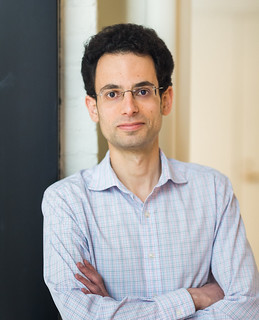
It is known that the classical O(N) model in dimension d > 3 at its bulk critical point admits three boundary universality classes: the ordinary, the extraordinary and the special. The extraordinary fixed point corresponds to the bulk transition occurring in the presence of an ordered boundary, while the special fixed point corresponds to a boundary phase transition between the ordinary and the extra-ordinary classes. While the ordinary fixed point survives in d = 3, it is less clear what happens to the extraordinary and special fixed points when d = 3 and N is greater or equal to 2. I’ll show that formally treating N as a continuous parameter, there exists a critical value Nc > 2 separating two distinct regimes. For N < Nc the extra-ordinary fixed point survives in d = 3, albeit in a modified form: the long-range boundary order is lost, instead, the order parameter correlation function decays as a power of log r. For N > Nc there is no fixed point with order parameter correlations decaying slower than power law. I’ll discuss how these findings compare to recent Monte-Carlo studies of classical and quantum spin models.